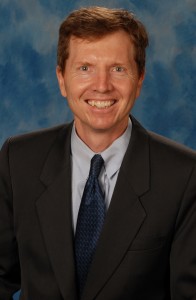NSU Newsroom
SharkBytes
Horizons
This version of NSU News has been archived as of February 28, 2019. To search through archived articles, visit nova.edu/search. To access the new version of NSU News, visit news.nova.edu.
This version of SharkBytes has been archived as of February 28, 2019. To search through archived articles, visit nova.edu/search. To access the new version of SharkBytes, visit sharkbytes.nova.edu.
NSU Researcher Receives U.S. Patent for Developing Fall Prevention Model

Patrick Hardigan, Ph.D., executive director for Health Professions Division research at Nova Southeastern University, was honored for receiving a U.S. Patent for an algorithm he developed called the “Statistical Model for Predicting Falling in Humans,” also known as the “Fall Model”.
FORT LAUDERDALE-DAVIE, Fla.- December 3, 2013 – Each year, one in every three adults age 65 and older falls, according to the Centers for Disease Control (CDC). These falls are the leading cause of fatal and nonfatal injuries among older adults, resulting in approximately $30 billion in direct medical costs per year.
In an effort to prevent these unnecessary injuries and deaths, Patrick Hardigan, Ph.D., executive director for Health Professions Division research at Nova Southeastern University (NSU), set out to develop a model used to help predict the effect of medication and dosage on injurious falling. He recently received a U.S. Patent (No. 8,521,490) for an algorithm he developed called the “Statistical Model for Predicting Falling in Humans,” also known as the “Fall Model.”
“Our goal is to develop a multidisciplinary fall prevention program and ultimately reduce the number of deaths and serious injuries due to falls,” said Hardigan.
The Fall Model uses a robust amount of unidentified patient information from the state of Florida and other public sources such as height, weight and age, combined with each respective patient’s clinical diagnosis and prescription medication regimen to determine the patient’s likelihood of falling. The result is a “likely” or “not likely” determination.
This model will eventually be computerized in an easy-to-use template for use in health care settings, including hospitals, pharmacies, nursing homes and clinics. This computerized application will provide individual risk profiles for falling that will enable health professionals to implement personalized fall prevention strategies. Providers will be able to enter patient data to determine if alternate drugs should be prescribed or dosages altered, and/or whether a patient should be under stricter observation or undergo physical therapy or other form of preventative measure to reduce the risk of the patient falling.
“Statistical models like this offer significant inherent advantages for clinicians because they can correctly register the simultaneous importance of a dozen or more factors,” said Gary S. Margules, Sc.D., NSU vice president for research and technology transfer.
The growing popularity of clinical guidelines suggests that consistent application of evidence-based medicine is a desirable feature of contemporary medicine.

Gary S. Margules, Sc.D., Nova Southeastern University (NSU) vice president for research and technology transfer; Fred Lippman, R.Ph., Ed.D., chancellor of NSU’s Health Professions Division; Ralph V. Rogers Jr., Ph.D., NSU provost and executive vice president for academic affairs; Patrick Hardigan, Ph.D., executive director for NSU Health Professions Division research; and George L. Hanbury II, Ph.D., NSU president and CEO.
“NSU is committed to translational research like this and we are proud of what Dr. Hardigan and his team have accomplished,” said George L. Hanbury II, Ph.D., NSU president and CEO. “Breakthroughs such as these will have a real-world impact on countless lives.”
Falls can cause moderate to severe injuries, such as hip fractures and head traumas, and can increase the risk of early death, according to the CDC. In 2010, 2.3 million older adults were treated in emergency departments and more than 662,000 were hospitalized, causing an unnecessary burden on the health care system.
###
About Nova Southeastern University: Situated on 314 beautiful acres in Ft. Lauderdale, Florida, Nova Southeastern University (NSU) is a dynamic fully accredited research institution dedicated to providing high-quality educational programs at all levels. NSU is a not-for-profit independent institution with 27,000 students. NSU awards associate’s, bachelor’s, master’s, specialist, doctoral and first-professional degrees in a wide range of fields. NSU is classified as a research university with “high research activity” by the Carnegie Foundation for the Advancement of Teaching, and it is one of only 37 universities nationwide to also be awarded Carnegie’s Community Engagement Classification. For more information, please visit www.nova.edu.
Media Contact:
Jeremy Katzman, M.B.A. | Office of Public Affairs
954-262-5408 (office)
954-661-7000 (cell)
j.katzman@nova.edu